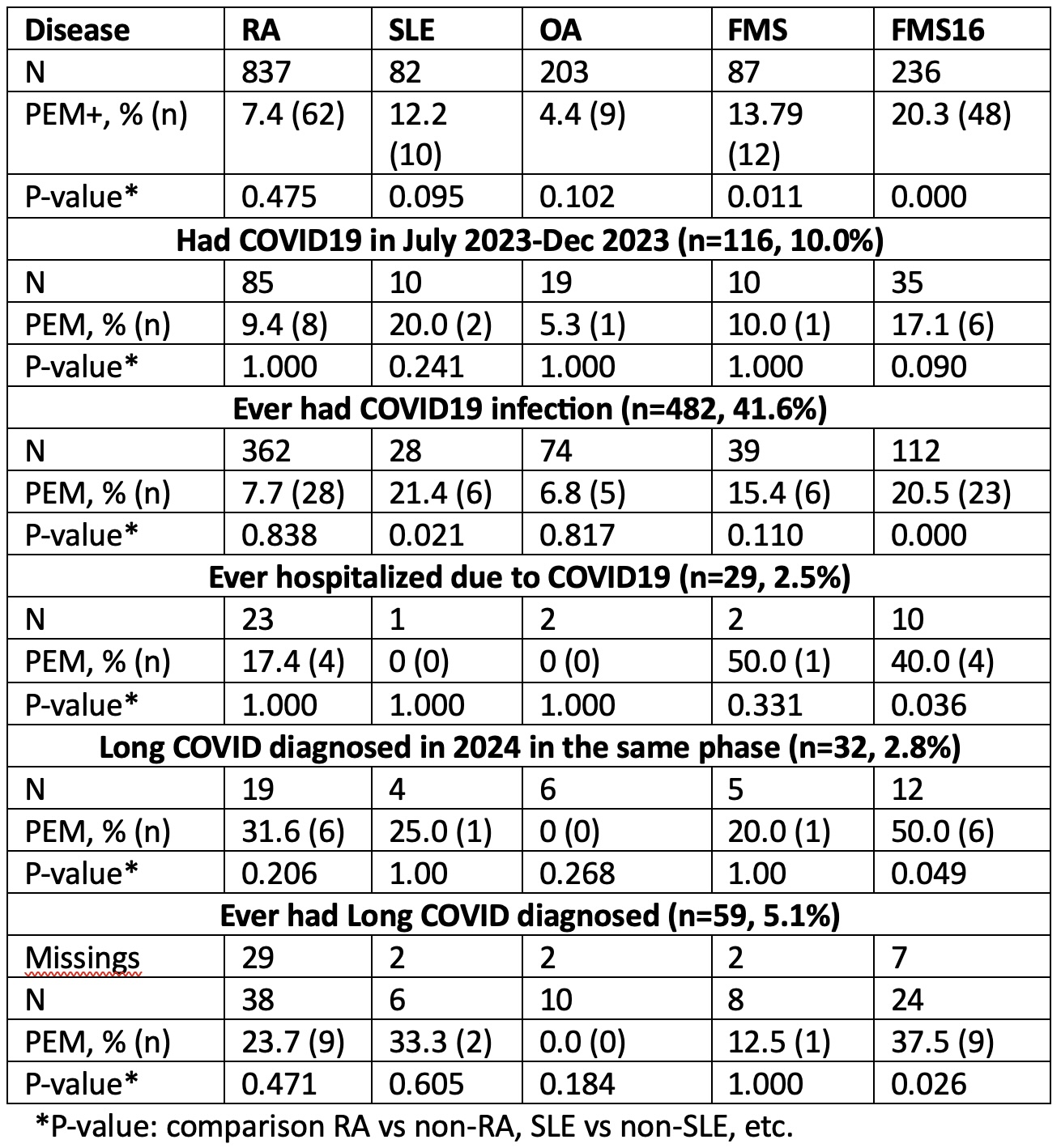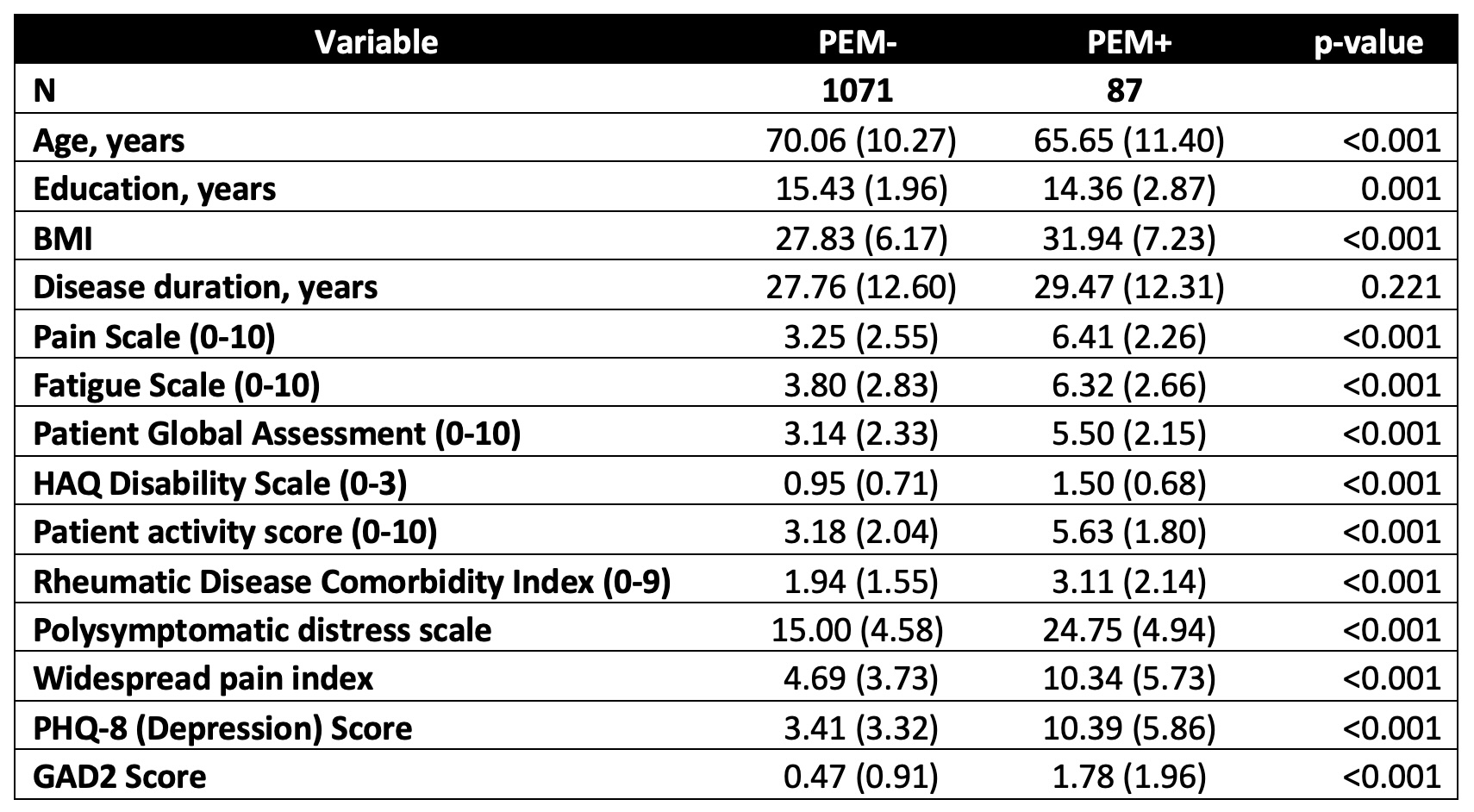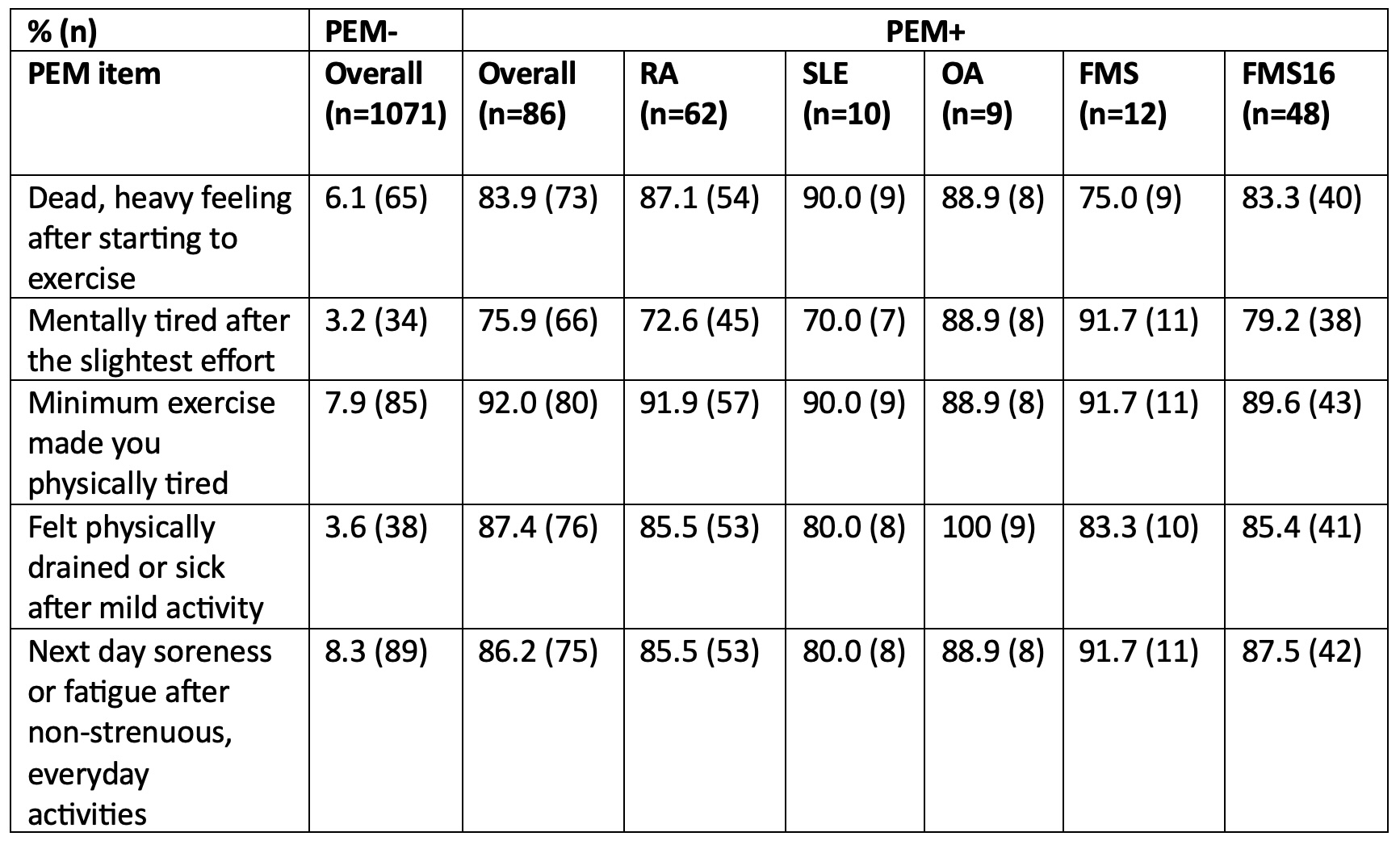Session Information
Date: Saturday, November 16, 2024
Title: Abstracts: Pain in Rheumatic Disease Including Fibromyalgia
Session Type: Abstract Session
Session Time: 1:00PM-2:30PM
Background/Purpose: Chronic fatigue is the dominant symptom in patients with Long COVID and Myalgic encephalomyelitis/Chronic fatigue syndrome (ME/CFS) as well as an important and prevalent symptom among patients with rheumatic diseases. Understanding the nature and interrelationship of the fatigue among these disorders is important both for epidemiologic understanding and clinical management. A cardinal and putative distinguishing feature of the fatigue present in patients with Long COVID and ME/CFS from other fatiguing states is the presence of post-exertional malaise (PEM) which refers to a worsening of fatigue and other fatigue related symptoms after exertion which was previously tolerated and often delayed 24-72 hours or more1. PEM has not been systematically investigated in rheumatic diseases and insights into its prevalence is an important initial step in further defining its nature and relationships of fatigue in these conditions compared to Long COVID and ME/CFS. The current study utilizing a validated instrument2 for the detection of PEM represents the first effort to define its prevalence across rheumatic diseases states and its relationship to COVID19 infection status.
Methods: Adult participants in the Forward Databank with rheumatic diseases completed comprehensive questionnaires including the PEM subscale questions from the DePaul
Symptom Questionnaire from January through June 2024. PEM+ was defined as having at least a frequency ≥2 and simultaneously a severity ≥2 in any item on the survey. We categorized diagnoses into RA, OA, FMS, and SLE, and additionally those who met the 2016 Fibromyalgia criteria (FMS16) independent of primary diagnoses. Additional items included details of COVID19 infection, Long COVID diagnosis, and comorbidities.
Results: A total of 1158 participants completed the PEM questionnaire with 7.5% PEM+ (4.4% OA to 14% FMS, Table 1). The highest prevalence of 20% was associated with those meeting FMS16. While any prior COVID19 infection was associated with PEM+, more recent and hospitalized COVID19, and Long COVID diagnoses had higher PEM+. Table 2 shows association with PEM+ with worse health and disease symptoms including depression and widespread pain. In contrast, younger age was associated with PEM+. In addition, we present the breakdown of PEM items selected for those PEM+ in Table 3.
Conclusion: This is the first study we are aware of that presents PEM rates in a RMD population. We found important associations with PEM status including disease activity and COVID19 infection exposure that require additional understanding notably around the use of graded exercise.
References:
1. Appelman, B, Charlton, B.T., Goulding, R.P. et al. Muscle abnormalities worsen after post-exertional malaise in long COVID. Nat Commun 15, 17 (2024). https://doi.org/10.1038/s41467-023-44432-3
2. Cotler, J., Holtzman, C., Dudun, C. & Jason, L. A. A brief questionnaire to assess post-exertional malaise. Diagnostics 8, 66 (2018). https://doi.org/10.3390/diagnostics8030066
To cite this abstract in AMA style:
Michaud K, Gandhi S, Pedro S, Calabrese C, Katz P, Calabrese L. Prevalence of Post-exertional Malaise (PEM) in Adults with Rheumatic Diseases and Relationship with COVID19 Infection [abstract]. Arthritis Rheumatol. 2024; 76 (suppl 9). https://acrabstracts.org/abstract/prevalence-of-post-exertional-malaise-pem-in-adults-with-rheumatic-diseases-and-relationship-with-covid19-infection/. Accessed .« Back to ACR Convergence 2024
ACR Meeting Abstracts - https://acrabstracts.org/abstract/prevalence-of-post-exertional-malaise-pem-in-adults-with-rheumatic-diseases-and-relationship-with-covid19-infection/



